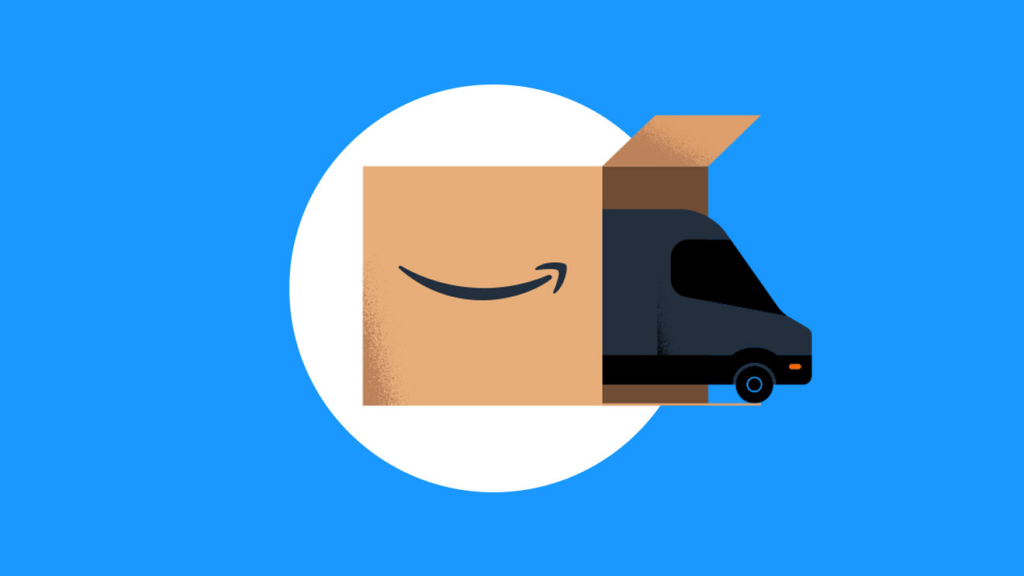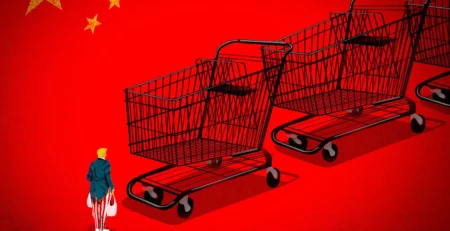It doesn’t matter what the product is—if you’re an online seller, you need to be on Amazon. It’s the center point of all e-commerce and you’ll only lose money by ignoring it. We’ve put together a list of 5 of the best practices online you can follow to realize success on Amazon and Prime.
Table of Contents
Figure Out What To Sell
Before making any moves, you need to figure out what you want to sell and to whom. To determine which products will sell best online and which niches could be most profitable for you, it’s essential to delve into the details and thoroughly explore your interests and strengths. You can generate product ideas by examining the Amazon Best Sellers list and closely analyzing the top-performing products. Here’s a breakdown of the things you should focus on:
Price Range: Take note of the specific price range within which the top-selling products fall. Determine whether they are priced affordably, appealing to budget-conscious buyers, or offer exceptional value at a higher price point.
Review Analysis: Dive into the reviews of these products, both positive and negative. Pay attention to what customers like and dislike about the products, as well as any common themes or recurring issues mentioned in the feedback.
Seasonal Trends: Evaluate whether certain products experience fluctuations in demand based on seasonal trends. For instance, items like bathing suits may see higher purchases during the summer months, while winter coats may be in demand during colder seasons.
Shipping Considerations: Assess the size and weight of the products to understand potential shipping costs and logistical challenges. Larger or heavier items may incur higher shipping fees, which could impact profitability if not factored into pricing strategies effectively.
By thoroughly analyzing these factors, you can gain valuable insights into products that have a strong market demand but also align with your interests and expertise. This informed approach can help you identify lucrative opportunities within your chosen niche and set the foundation for a successful online business venture.
Product Sourcing
After identifying the products you want to sell, the next crucial step is to source them effectively. Here’s a more detailed guide on how to source products for your online business:
Product Creation: Determine whether you’ll create products from scratch, collaborate with manufacturers to design custom items, or source ready-made products.
Sourcing Methods: Explore various sourcing methods such as wholesale purchasing, dropshipping, print on demand, or manufacturing partnerships. Each method has its own set of advantages and considerations.
Inventory Management: Consider how you’ll manage inventory. Dropshipping and print on demand allow you to operate without stocking inventory, while wholesale and manufacturing partnerships may require storage space.
Amazon Storefront: Utilize Amazon’s platform to set up an ecommerce storefront and leverage services like Fulfillment by Amazon (FBA) to manage inventory and shipping logistics.
Research and Comparison: Take the time to research multiple suppliers and compare their offerings to ensure you select the most suitable partner for your business needs.

Choosing Suppliers: If working with suppliers, thoroughly vet potential partners. Consider the following factors:
- Quality: Ensure suppliers offer high-quality products by checking customer reviews and requesting samples.
- Price: Compare pricing, including shipping costs, to find the best deal.
- Delivery Times: Inquire about delivery lead times to set accurate expectations for customers.
- Customer Service: Assess the supplier’s responsiveness and support for inquiries or issues.
- Returns Policy: Understand the supplier’s return policy, including any associated fees.
- Inventory Capacity: Confirm if the supplier can handle large inventory volumes and scale with your business.
- Shipping Options: Review available shipping methods and associated costs.
- Packaging: Check if the supplier offers customizable packaging options.
- Branding: Determine if the supplier provides branding options such as custom labels or packaging.
- Bulk Discounts: Inquire about discounts for larger order quantities.
By thoroughly considering these factors and conducting detailed research, you can effectively source quality products for your online business while ensuring customer satisfaction and business success.
Pick a Sales Channel
When deciding which channels to use for selling, it’s crucial to consider what you’re selling and who your target audience is.
If you’re trying to reach a wide audience and sell a variety of products, utilizing both your own website and established platforms like Amazon can be effective strategies.
Creating an e-commerce store from scratch gives you full control over your brand and customer experience. Alternatively, Amazon Stores Builder offers a convenient option to build a custom e-commerce website with built-in payment processing and review management tools.
Social media platforms such as Facebook, Instagram, and Pinterest can also serve as valuable sales channels, especially if your target audience is active on these platforms. Utilizing features like live-streaming on platforms like Amazon Live can further enhance customer engagement and drive sales.
Some sellers may prefer to focus on a single sales channel, while others may opt for a mix of online platforms and offline channels like local classifieds or radio and television advertising. Experimentation is key to determining the most effective approach for your specific business model and target audience.
Selling and Listing Costs
The cost to sell online will vary with different sales channels. Be sure to pay attention to fees, costs, and other charges as you decide on options for your business. Some stores will charge a small fee to list products, while others offer free listings. Here’s a quick breakdown of the different fees you’ll come across:
- Listing fee: typically, a flat fee to list on the site, either per item or a monthly charge
- Selling fee: a percentage of the selling price (may include shipping and handling)
- Payment processing fees: sometimes charged if you accept credit cards
Expenses can add up. If avoiding fees is your top priority, then a plan that charges you fees at the end of the sale (like the Amazon Individual plan) can cut costs. In the Amazon store, choose from two selling plans:
- Individual: $0.99 per item sold + additional selling fees (ideal if you sell less than 40 units monthly)
- Professional: $39.99/mo + additional fees (ideal if you sell more than 40 units monthly and want to run ads)
Some additional fees might include:
- Category fees: A percentage of each sale, depending on the category (for example, baby products incur a fee of 8% if the total sale price is $10 or less)
- Fulfillment costs: If using FBA, fees are based on size and weight (for example, the fee for products 15″ x 12″ x 0.75″ or smaller and weighing 6 ounces or less is $3.07 during non-peak times)
- Inventory fees: These can vary depending on factors like product volume, size, and weight, and how long products sit in storage
Shipping
Shipping time can make or break a sale. A survey of U.S. shoppers found that 83% of shoppers think free shipping is the deciding factor between different brands/platforms when shopping online. Additionally, more than half of the people surveyed said they regularly abandon shopping carts once they see high delivery costs.
Shipping costs and distance are clearly crucial when planning the shipment of your items. Some sellers opt for global shipping through platforms like Amazon, expanding their reach to customers worldwide. Conversely, others prefer to limit their shipping radius and stick with local areas.
Your first order of business is deciding whether you’ll manage shipping yourself or outsource it to a third party. While self-shipping provides greater control over the process, it can be time-consuming. On the other hand, outsourcing can have additional costs but save valuable time, allowing you to focus on other aspects of your business. Ultimately, the decision should align with the needs and goals of your business.
Amazon Shipping
When a customer purchases a product, it can be shipped by Amazon through Fulfillment by Amazon (FBA), or you can handle the fulfillment yourself. Some Amazon sellers choose to combine both methods. Explore further details in this e-commerce fulfillment guide.

Prime shipping
Lots of Amazon shoppers seek out items with the Prime badge since it means quick, free shipping. For sellers, using FBA is the simplest route to earn that Prime badge on most listings.
Fulfillment by Amazon (FBA)
When sellers join Amazon’s selling platform, they’re automatically part of FBA. If they choose to use it, they send their products to Amazon’s fulfillment centers. From there, Amazon takes care of shipping, customer service, refunds, and returns for those items.
Seller fulfillment
Certain items aren’t suitable for FBA. Hazardous goods or seasonal products with high storage fees may not meet fulfillment center criteria. Some sellers may have their own logistics network or prefer handling orders themselves for business reasons.
These five tips should help position you for success as a seller on Amazon. However, you still need to focus on product descriptions, pictures, and packaging before customers recognize you as a reliable seller. As long as you listen to customer feedback and keep your products updated, you should be good!
For more similar blogs, visit EvolveDash today!
FAQs
- What is the best way to market my Amazon business in 2025?
Focus on social media, influencer partnerships, and Amazon ads. Leverage tools like Amazon Sponsored Products and Amazon Live to engage customers directly. Also, consider creating a strong email marketing strategy to reach past buyers.
- How do I handle customer service when using Fulfillment by Amazon (FBA)?
With FBA, Amazon handles customer service for fulfillment-related issues, like returns and refunds. However, you’ll still need to handle inquiries related to product information, product issues, or customer satisfaction. Ensure your product descriptions and listings are clear to reduce misunderstandings.
- Can I sell on Amazon if I don’t have a product to manufacture?
Yes, you can sell through methods like dropshipping or print on demand. These methods allow you to sell products without needing to manufacture them yourself, and suppliers handle the shipping and fulfillment.
- What tools can I use to track and manage my Amazon sales?
Tools like Amazon Seller Central, Jungle Scout, Helium 10, and Keepa help track sales, monitor product performance, and analyze market trends. These tools provide valuable insights to optimize your business strategy.
- How can I improve my product listings to rank higher on Amazon’s search results?
Focus on optimizing your titles with relevant keywords, writing clear product descriptions, and including high-quality images. Additionally, getting positive reviews, maintaining competitive pricing, and utilizing Amazon SEO tools can help improve your product’s ranking.



















